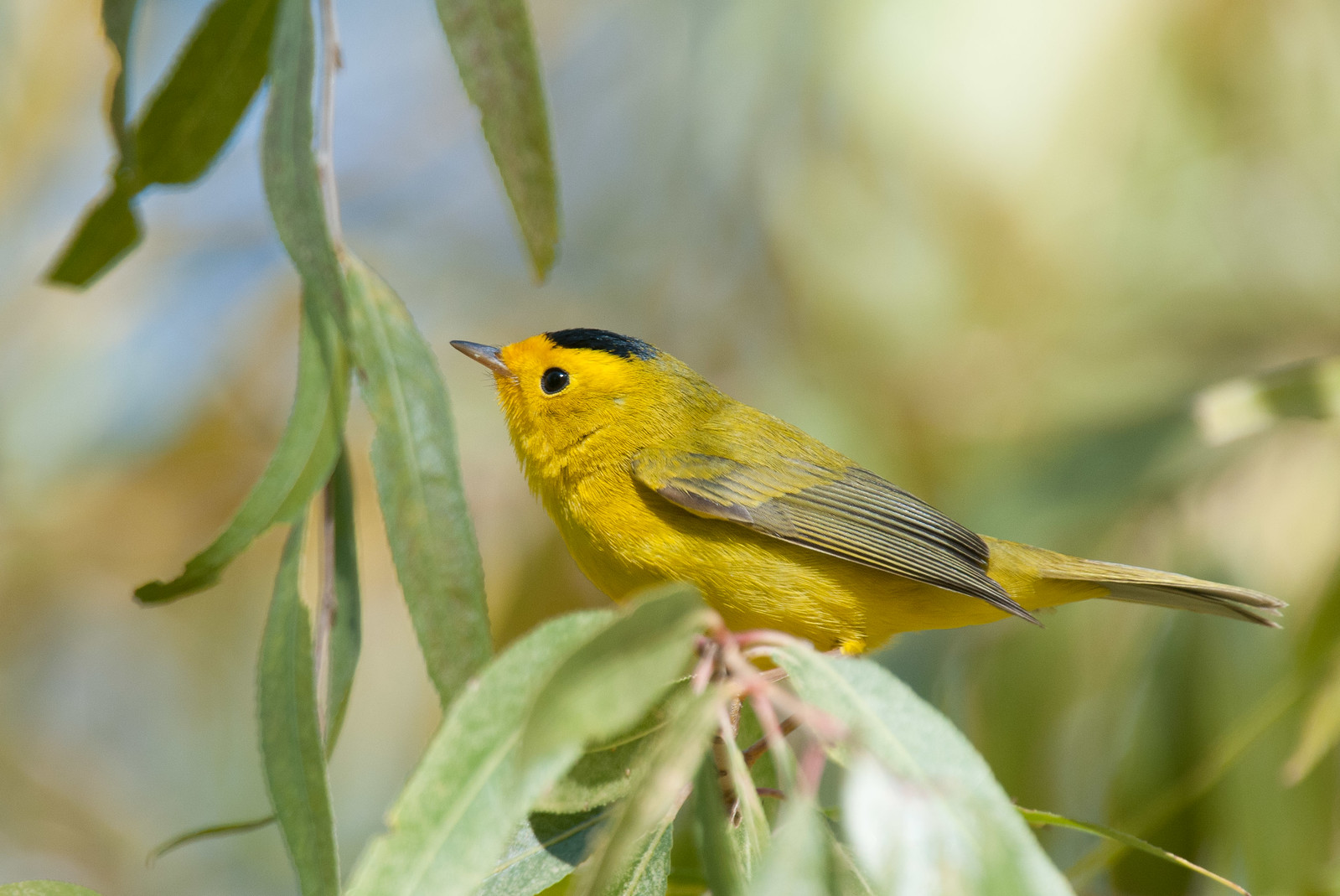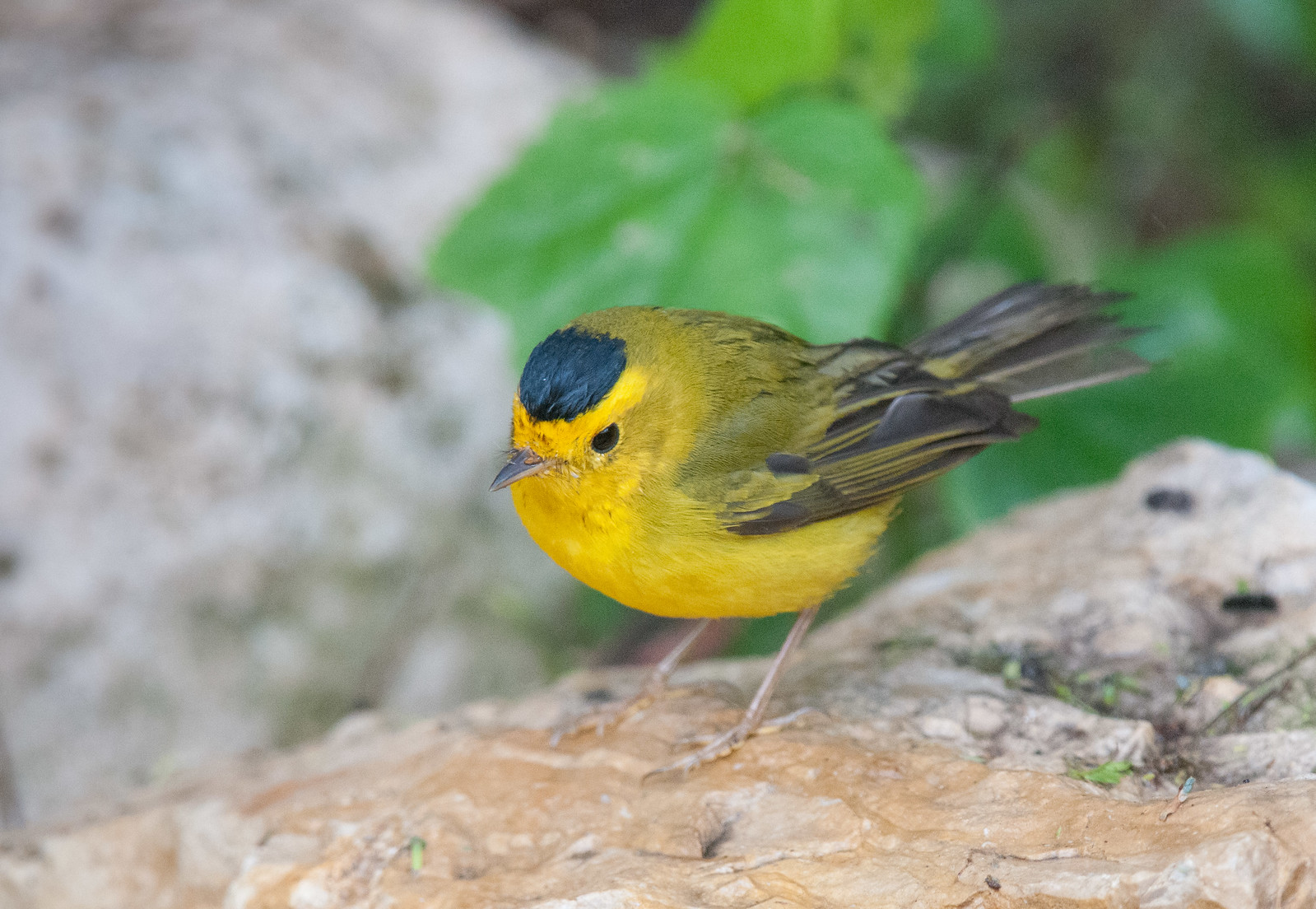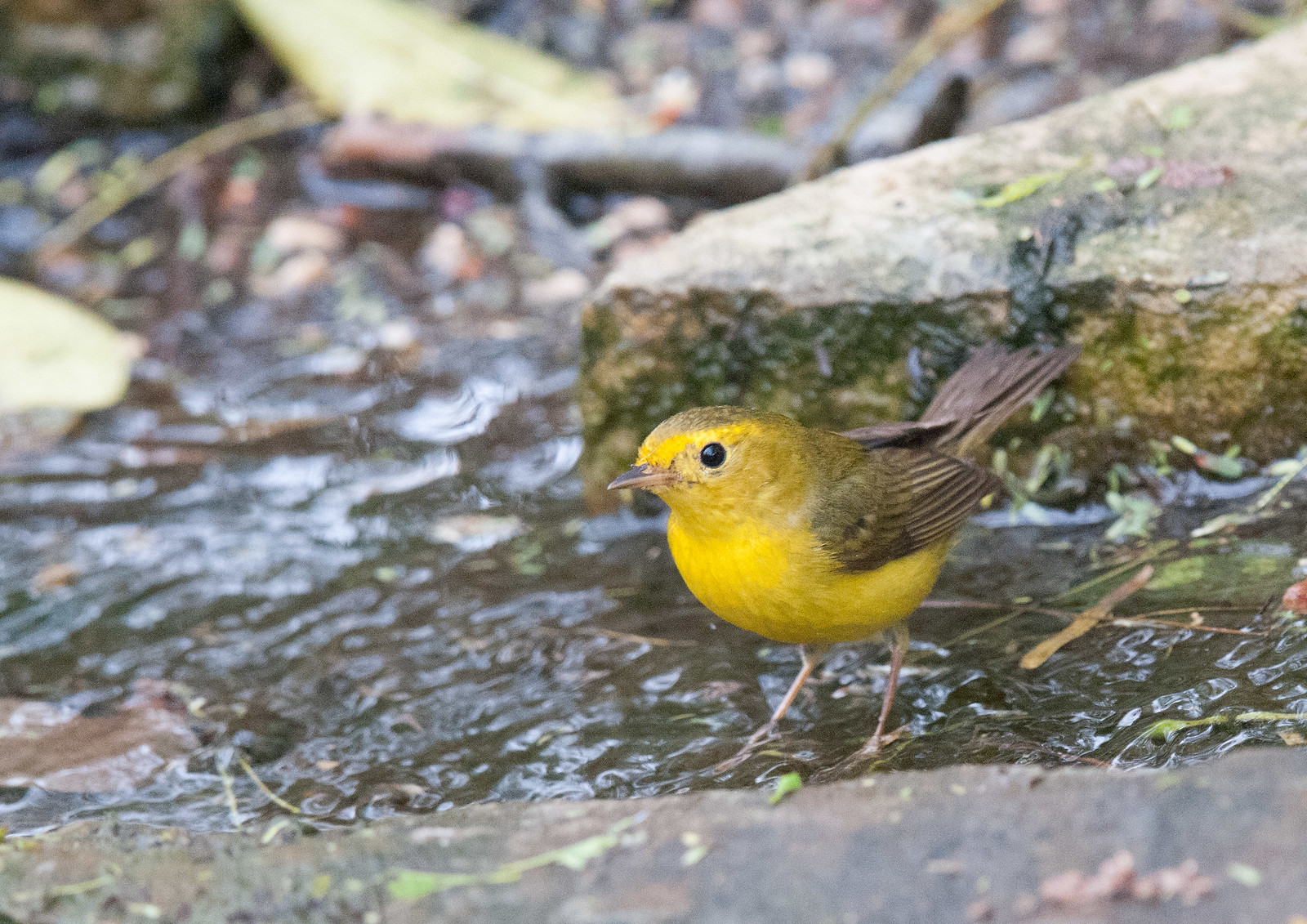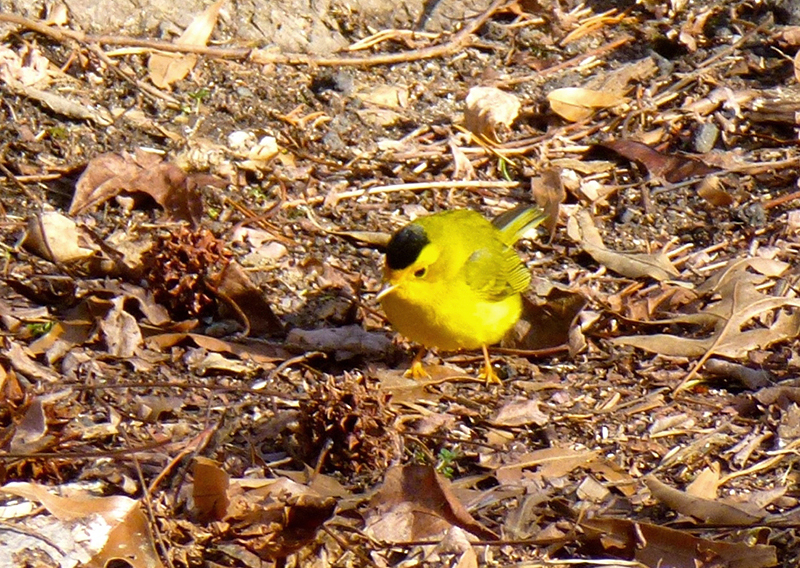| Early Spring Date: | May 1 |
| Late Spring Date: | May 27 |
| Best Dates to See in Spring: | May 11-24 |
Spring: Wilson's Warblers are extremely common in the western United States, but they are not common in the East. They show up every year in small numbers at Monticello Park, with an average of 8 or 9 being recorded. They usually arrive late in migration, and the best time to look for them is during the middle two weeks of May.
Fall: Wilson's Warblers are rare during the fall at Monticello; a small number of sightings have been recorded.
Where to See Them in the Park
Wilson's Warblers typically skulk in the understory, but some hop into the open on a tree or bush. They sometimes go into the stream to bathe and drink.
Physical Description


Wilson's Warblers are mostly yellow with an olive back. They are small, with long pink legs. The most distinctive fieldmark on the male is a black skullcap. He has bright yellow eyebrows over his large black eyes. The yellow undertail can be an important fieldmark if you cannot see the head.

The females are more difficult to identify. They do not have a black cap — their cap is olive, the same color as their back. They are smaller than female Hooded Warblers and do not have white tail feathers.
Fall: Fall plumage has only subtle variations from spring plumage for both sexes and all ages.
Vocalizations
The song of the Wilson's Warbler is a slow trill that drops off at the end. Because they skulk in the bushes, knowing their song is important when trying to locate them.
Hear the vocalizations of the Wilson's Warbler.
Notes

The closest relative to the Wilson's Warbler who passes through Monticello is the Canada Warbler, who is larger. The Wilson's Warbler has a number of subspecies — exactly how many is being sorted out by the taxonomists. A Wilson's Warbler discovered near the Huntley Meadows Visitors Center on the 2012 Christmas Bird Count might have been one of the western subspecies.
Origin of Names
Common Names: Wilson's after Alexander Wilson. The New World Warblers were named for their similar appearance to European warblers, to whom they are not related. Most of the New World warblers do not warble (sing continuously with notes that change frequently).
Genus Name: Cardellina is an Italian diminutive of cardella, which means goldfinch.
Species Name: Pusilla means tiny, for the small size.
Wilson's Warbler video footage
Return to the Index
